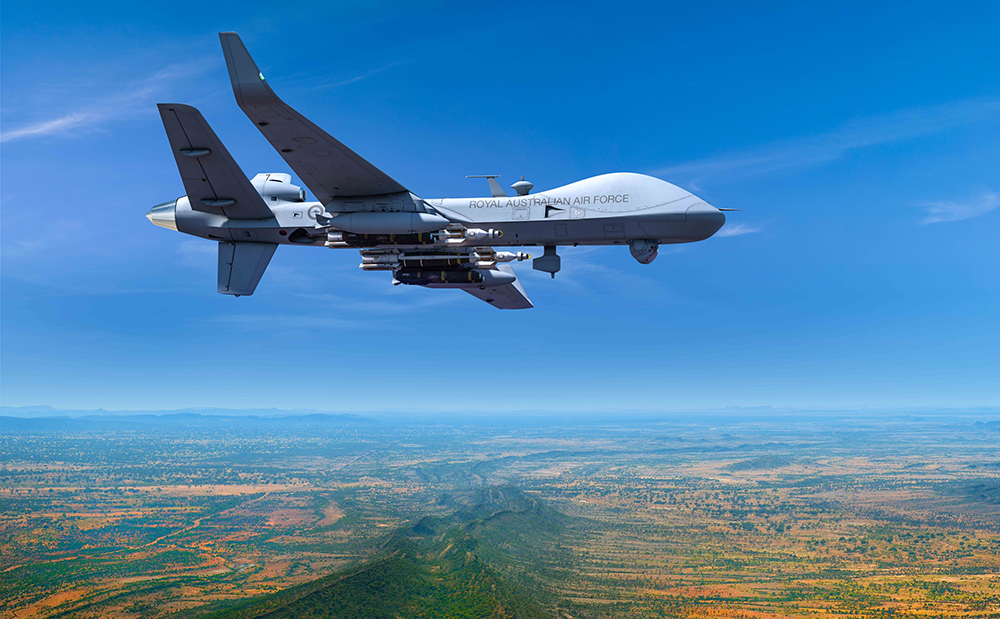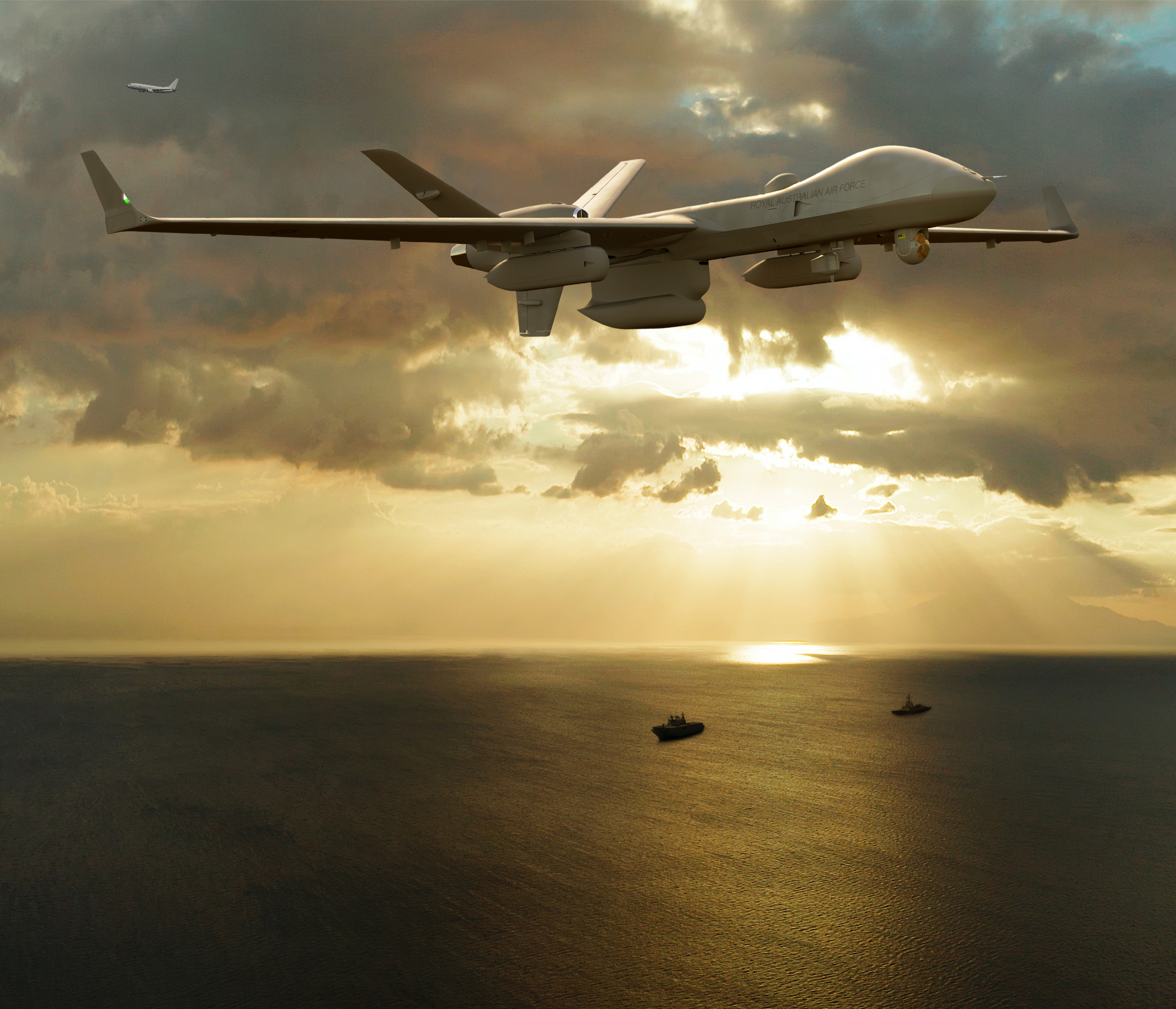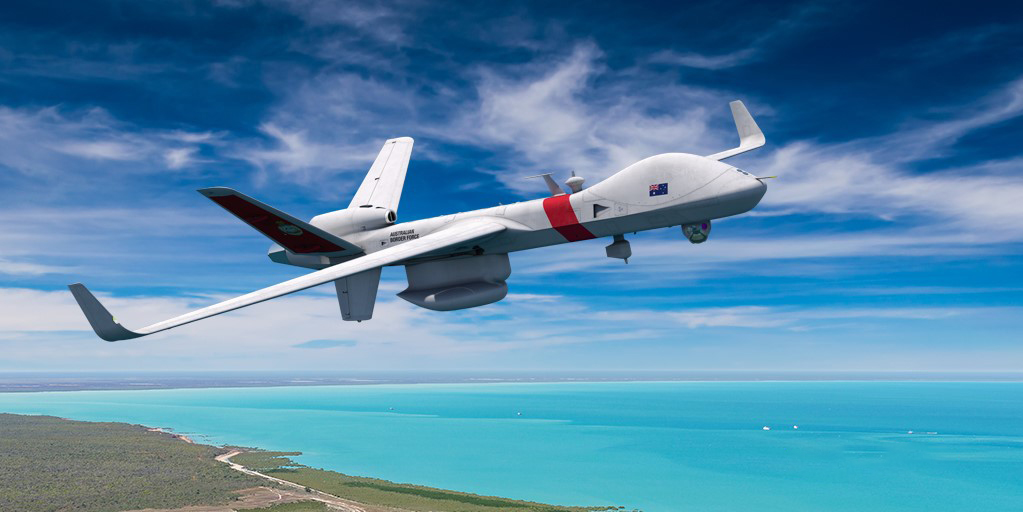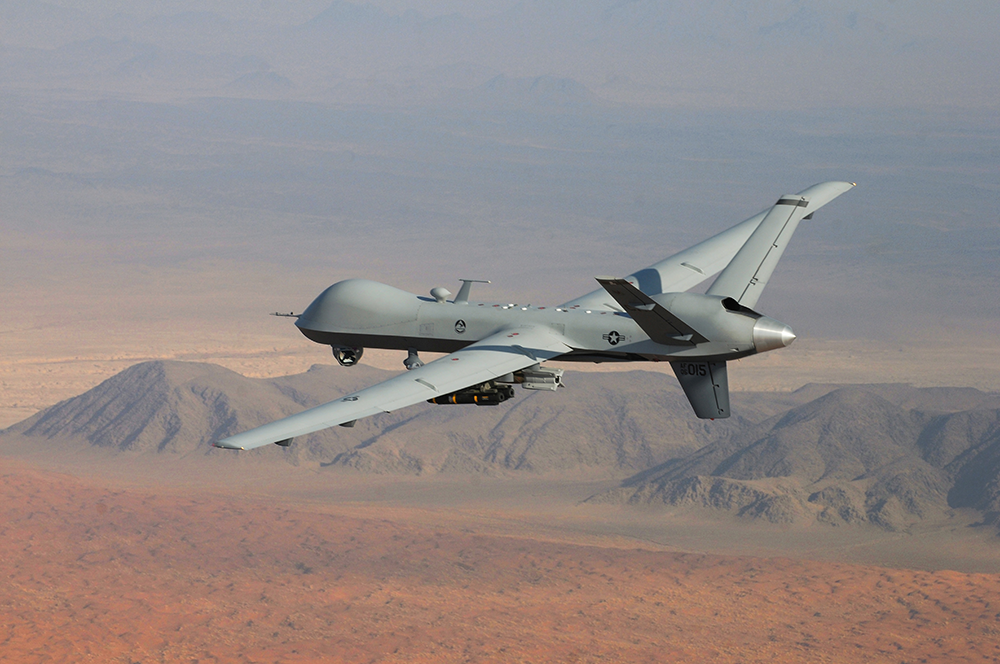Operational roles for the Predator series of Remotely Piloted Aircraft (RPA) are evolving with changes in warfighting priorities for the U.S. and its Allies.
Operational roles for the venerable Predator series of remotely piloted aircraft (RPA) produced by General Atomics Aeronautical Systems Inc. (GA-ASI) are evolving with changes in warfighting priorities for the US and its allies. While support to land forces will remain a core role for these systems, employment focused on high-end and grey-zone warfare, including in the maritime and contested environments, are shaping current development priorities for GA-ASI and its customers.
The GA-ASI MQ-9 medium-altitude long-endurance (MALE) series of RPA had their genesis in the 1990s with an early version of the ‘Predator’ RPA produced with intelligence, surveillance and reconnaissance (ISR) capability. Predator operated over Bosnia in 1995, with more capable, armed versions of the aircraft commencing operations in the Middle East theatre in 2001. The more advanced USAF MQ-9A ‘Reaper’ RPA variants followed, along with the MQ-1C ‘Gray Eagle’ RPA for the US Army.
GA-ASI’s most advanced RPA variant – the MQ-9B SkyGuardian/SeaGuardian – has commenced production, with the UK and Australia intending to acquire these systems, and significant customer interest from around the world. The government of Belgium has also approved Belgian Defense to negotiate for the acquisition of GA-ASI’s MQ-9B.
While SkyGuardian was first envisioned primarily to support land forces, the addition of a specialised maritime radar and an Automatic Identification System (AIS), along with other optional payloads, converts the RPA into the ‘SeaGuardian’ variant.

The vast majority of GA-ASI’s military customers have used RPA in support of land forces, including in the counter-insurgency (CI) role. Overland ISR, strike and communications support roles dominate such employment. Long endurance, high operational availability, low operating costs and a low deployed footprint have been key attributes for these RPA operations.
With the focus of US and allied forces now turning to multi-domain, high-end warfare in the context of great power competition, including an increased focus on ‘grey-zone’ warfare – warfare below the threshold of armed conflict, and often involving militia and constabulary forces, the traditional roles for MQ-9 series RPA are transitioning to multi-role, multi-environment and multi-domain applications, including maritime warfare. With this refocus comes an increased requirement for networking and synergies with other tactical and operational platforms. System testing for these new RPA capabilities is now underway in representative environments and threat levels.
The MQ-9B possesses a number of unique advantages not found in manned platforms: they have very long endurance (40 hours or more based on payload), are very cost-effective, and have a very low footprint. For expeditionary operations, MQ-9B can transition effectively between low and high altitude (500 to 40,000 feet), and can be employed in high-risk environments without the concern for loss of the crew. These attributes, which have been exploited in overland and largely permissible environments, are now being tested during cross-domain missions, including maritime surveillance, anti-submarine warfare (ASW) and broad-spectrum electronic warfare (EW) in contested scenarios. Developments that network the MQ-9B with other land, aerospace and maritime assets are enabling the role expansion.
Capability development and the integration of systems for MQ-9 series platforms is proceeding at an unprecedented pace within GA-ASI to meet US and allied requirements. The most prominent developments relate to ASW, EW, IR and EW self-protection systems, and advanced networking solutions, with flight trials on these configurations planned in 2020. Meanwhile, developments to the baseline MQ-9B SkyGuardian/SeaGuardian, including Detect and Avoid System (DAAS) to aid in the seamless operations in all classes of airspace, Portable Pre/Post-Flight Equipment (P3E) to enable expeditionary operations, and a range of automation and artificial intelligence (AI) applications for operations and processing, exploitation and dissemination (PED), are either operational or nearing completion.

In the Australian context, the Australian Defence Force has or is acquiring a range of very capable intelligence, surveillance, reconnaissance and electronic warfare (ISREW) weapon systems. The list includes the E-7A Wedgetail, P-8A Poseidon, MQ-4C Triton, MC-55A Peregrine and MQ-9B SkyGuardian. Operational roles for these systems overlap in some areas, with each providing an important contribution to the layered and networked aerospace force. This networked force creates a unique opportunity to maximise the cross-domain capabilities of all. No longer can the Air Force or ADF afford to operate platforms within a narrow set of roles. With the need to focus more fully on multi-domain, high-end and grey-zone warfare, with reduced warning times and asymmetric challenges, the requirement for versatility and flexibility of weapon systems has become essential.
While acquisition of the MQ-9B SkyGuardian by the ADF is justified primarily for support to land forces, there is clear potential for broader employment options to be exploited beyond the land environment, with operations in direct support of maritime forces for ISR, anti-submarine warfare, strike and EW, including expeditionary roles becoming feasible. Such operations now present as a strategic demand and viable opportunity. The ability to network the MQ-9B with other platforms, such as the Poseidon, Triton and Peregrine in the maritime environment, offers exceptional opportunities to further expand force employment options.
From an allied perspective, the MQ-9B is well suited to networking and interoperability during coalition operations due to its open system architecture and common communications protocols. Like other ADF aerospace ISREW platforms, the MQ-9B would comfortably integrate during such operations.
The MQ-9B is ideally suited to operate from a range of airfields throughout Australia and the region, including fields as short as 4,000 feet by using an automatic take-off and landing capability. A low footprint, expeditionary capability, whereby only a handful of essential personnel are required for support, enhances the MQ-9B’s versatility and employment options. The capability to auto-land at un-surveyed airfields is also in development by GA-ASI (recently demonstrated by the USAF). With such capabilities, the MQ-9B could operate more flexibly and rapidly reposition between deployed operating sites, when compared to other more strategic aerospace ISREW and strike assets. With expanding multi-domain capability options, the MQ-9B offers impressive future employment potential.

While not a traditional role but not entirely new for the MQ-9 series RPA platform, civil surveillance in the littoral and maritime environments are expanding the roles for RPA. As far back as 2006, a USAF MQ-9 conducted a successful civil maritime surveillance trial off the NW coast of Australia. In the US, the Customs and Border Protection force has effectively employed MQ-9 platforms for both overland and maritime surveillance activities since 2005. In the past two years, GA-ASI has conducted maritime and civil surveillance demonstrations in Japan and Europe, with further trials planned during 2020.
From an Australian perspective, GA-ASI has teamed with Cobham Australia for the proposed employment of manned and unmanned (MQ-9B SeaGuardian) platforms for the follow-on Australian Border Force aerial surveillance contract. By combining the advantages of manned and unmanned platforms, significant improvements in capability and efficiency are envisaged. With MQ-9B platforms supporting Defence and Border Force missions, the potential for excellent synergies would exists, including where grey-zone operations in Australia’s EEZ were necessary.
The acquisition of the MQ-9B SkyGuardian by the ADF for ISR and strike support for land forces will provide a much needed and, arguably, much overdue capability. The ADF’s investment in the highly versatile MQ-9B opens the door for additional capabilities and development which is now underway by GA-ASI for its customers. These new capabilities are designed to make the platform considerably more relevant across broader roles and in all environments and domains, including for high-end warfare and grey-zone employment. The ADF is well positioned to capitalise on these MQ-9B developments, including those relevant to the SeaGuardian, to optimise its layered, networked set of ISREW capabilities.
 Login
Login






